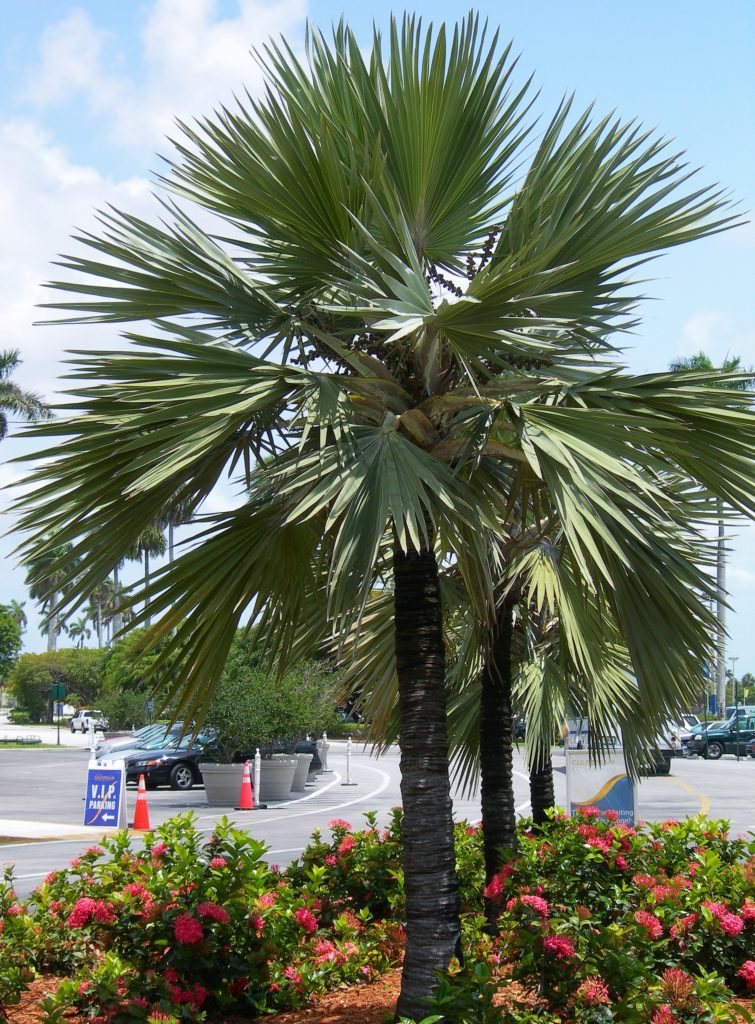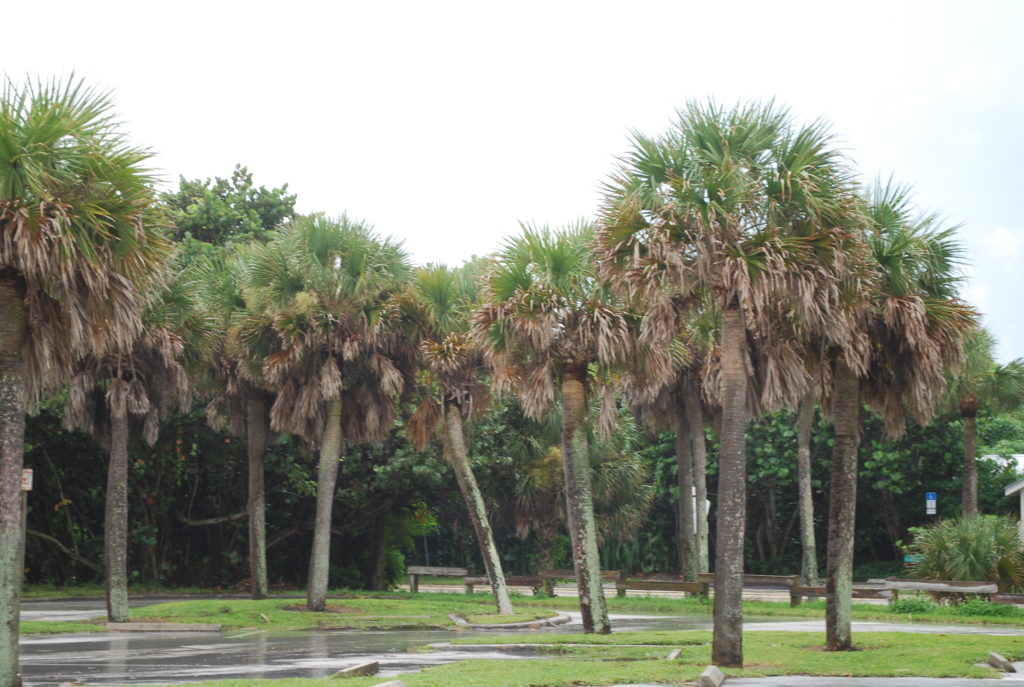Dear Carol, Is all the pruning of palm trees I see happening around my neighborhood really necessary before storm season? Is it good for the tree to cut the tops back to a few green fronds? How do I prune palms right for storm safety?
Thanks, John

During a windy storm, it is the trees we worry about. Palm trees are often abused in the name of hurricane safety. Removing green leaves from a palm does not make it less likely to fail during a hurricane; it makes it more likely to fail.
Palms are different. They are more closely related to grasses than oak trees, and as such, their growth habits and maintenance needs are somewhat different. Most palm trees are solitary or single-trunked and only have two growing points, one at the top and one at the bottom where roots originate.
Palms need all of the leaves they can grow. Compared to an oak tree with thousands of leaves, a palm only has 6 to 60 leaves, depending on the species. Leaves are the engines of a plant. They collect energy from the sun and use that energy, water, and minerals to make all of the sugar, the basis of life on the planet. Leaves pump life-giving water throughout the plant for cooling and cell use. Removing leaves before the palm is done with them reduces the palm’s ability to grow.

Removing green leaves from a palm does a lot of damage:
• It wounds the palm and produces a site open to invasion by insects and diseases.
• Green fronds protect the top growing point, the palm heart, from cold. Premature removal increases the palms’ susceptibility to cold and leads to winter damage or death. The old leaf bases or “boots” may also play a role in cold protection. Leave them on the tree and remove them only when naturally loose.
• Cutting green leaves reduces the palms’ natural resilience to high winds. So severe pruning often termed “hurricane pruning,” makes the palm more dangerous during a storm.
• Over-pruned palms develop a “bottle-neck,” that is a trunk with bulges and indentations. In high winds such as thunderstorms and hurricanes, these weak points will snap with or without bottle-necks, and the palm head breaks off, leading to plant death.
On a more practical note, palms planted in association with humans often are pruned for various reasons. The best practices for palm tree pruning are to remove only fronds that are 60% or more brown. However, if the trees must be pruned, do not remove any fronds that attach to the tree higher than the horizontal plane. Picture a clock with the hands at 9 and 3, do not remove any fronds above that line. If the leaves are green, the damage to the tree will still occur, but hopefully, removing only a few will minimize it.
Employ a certified arborist to correctly prune your trees. Yes, many professionals can and do offer excellent tree care. However, those that have sought certification are trained and tested on the proper techniques for good tree pruning. The best way to find a certified arborist is to use the International Society of Arboriculture website.
This article first appeared in the Treasure Coast Newspapers.
Leave a Reply